Top 17 trees to feed bees in New Zealand year round
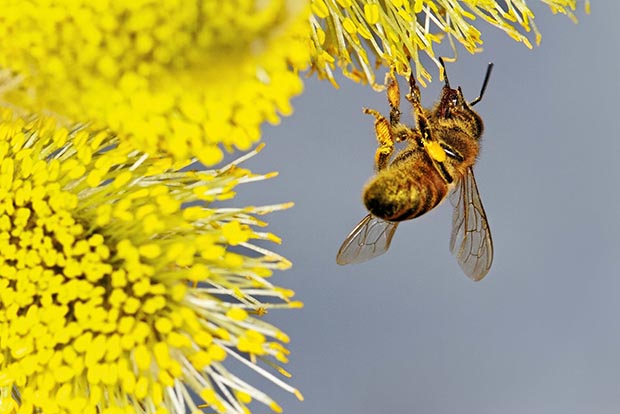
Feed hungry bees all year and add value to your property at the same time.
Words: Jenny Somervell
A decade ago we researched and planted trees on our 1.6ha block, but there was one animal we never thought of. We had trees for shelter, trees for a wetland area, trees to catch runoff and prevent erosion, for fruit and shade, to attract birds, and trees to just look beautiful.
But we didn’t have a single tree for bees. If we were doing it again now, a little research would tell us that flower and pollen resources for bees should be one of the most important criteria. Bee health is threatened by varroa mite and other yet-to-arrive pests and diseases, but the biggest problem is malnutrition. Bees don’t have enough to eat.
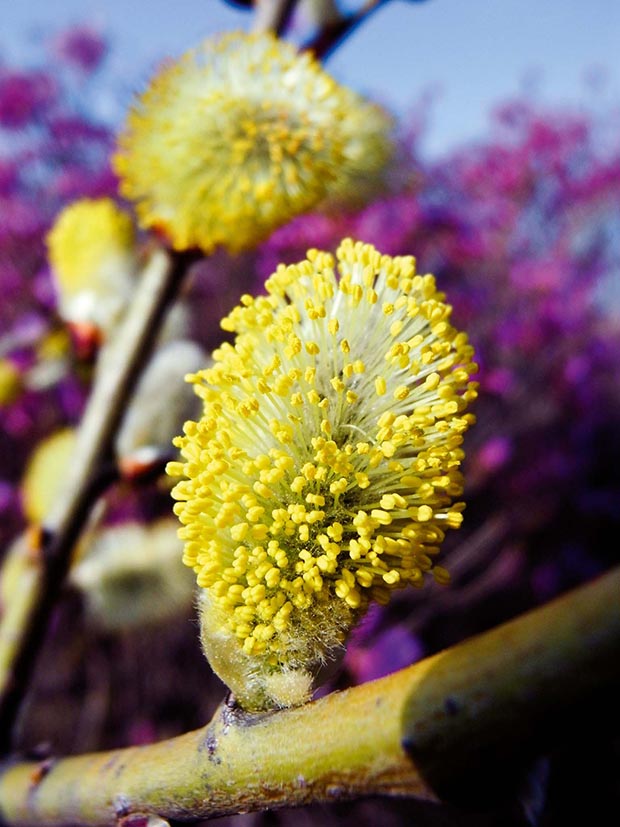
Pussy willow (Salix caprea).
WHERE ARE THE BEE TREES?
In each season, bees forage for pollen and nectar from flowers on a wide range of plants including cultivated crop or pasture plants, native trees and shrubs, and introduced weeds.
But countrywide, the removal of shelterbelts, the clearing of gorse and broom, the planting of single species shelter, and general land development, have all combined to significantly reduce floral food sources, especially in spring and autumn. In 2009, concerned at the decline in the supply of bee food, Federated Farmers’ Bee Industry Group launched ‘Trees For Bees’.
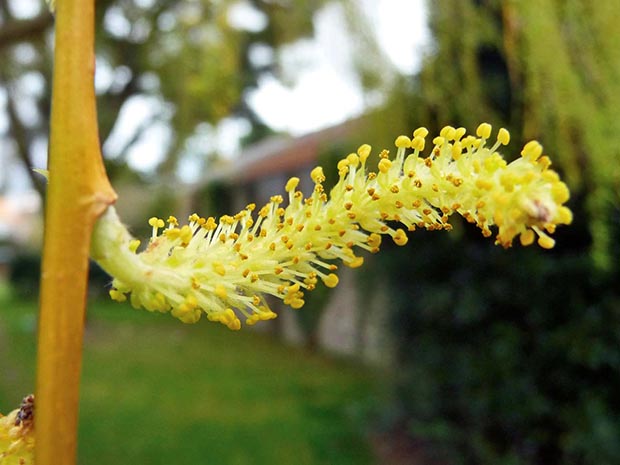
Weeping willow (Salix babylonica) Photo: Oroussei Wikime.
Their ongoing mission is to improve floral resources and pollen supplies by researching suitable bee trees and encouraging plantings on small and large farms and public lands.
WHAT TREES WILL SUIT YOUR REGION?
Not all bee trees suit every region, so Trees For Bees have compiled 10 regional planting guides of trees suitable for riparian margins, field edges, shelterbelts, roadside margins and urban areas. These include exotic and natives, along with heights and flowering times. To provide nectar and pollen through the seasons, a range of trees is recommended.
A quick glance down the Trees For Bees list suggests we did accidentally provide bee trees in the plantings on our block all those years ago, and many of the recommended species are ones which performed well on our difficult sites.
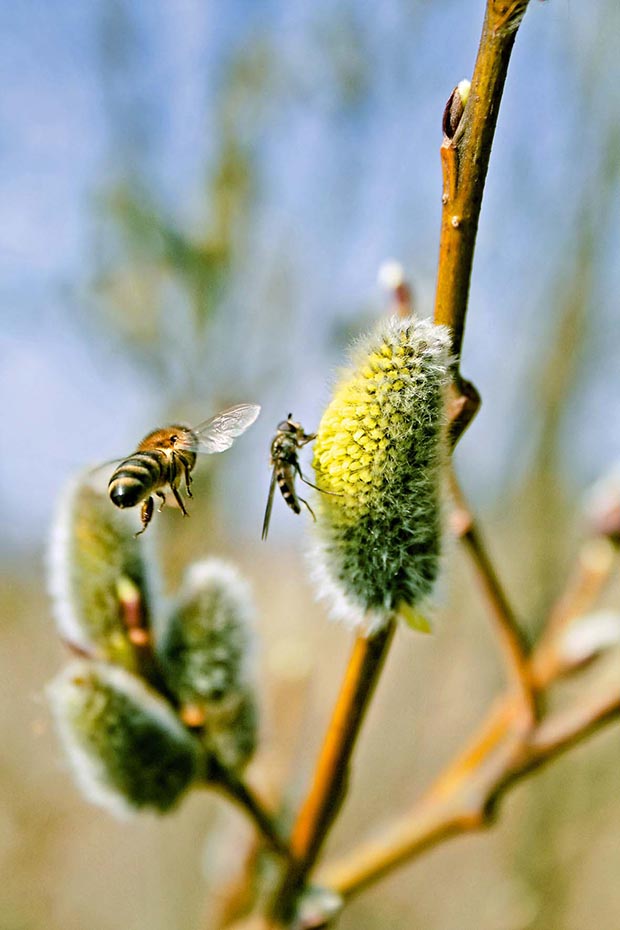
Pussy willow (Salix caprea).
Cabbage trees did just as well on water margins as on dry, eroded banks. Native flaxes (Phormium tenax) out-performed everything on our wetland and septic tank run-off area. Pittosporums and lemonwoods provided good shelter and will grow in almost any soil or climate.
17 TOP TREES YOU CAN PLANT ANYWHERE
This is a selection of great trees that will provide seasonal nectar and pollen that are suitable for most regions. Check out the lists online for ones specific to your area (see page 70 for details).
WINTER-EARLY SPRING (JUNE-SEPTEMBER)
Cootemundra wattle (Acacia baileyana)
Wattles are excellent sources of pollen and a few contribute nectar. Acacia baileyana is fast growing and flowers in July making it a valuable winter-spring source of pollen, if you can put up with the bright yellow pollen all over your car.
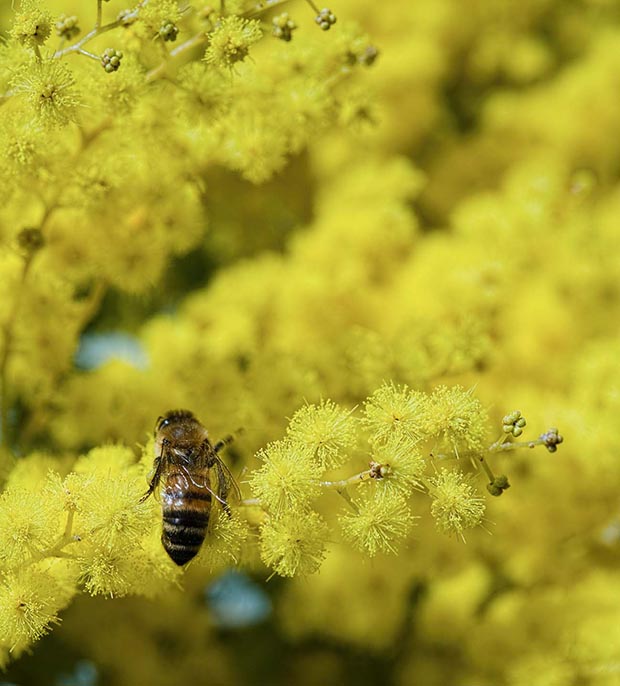
Cootemundra wattle (Acacia baileyana).
Pussy willow (Salix caprea) & weeping willow (Salix babylonica)
An early source of pollen (August-September), especially important in areas of pollen shortage. Quick and easily grown, good for soil erosion and happy in boggy situations, but keep away from drainage systems as the roots will search for water. The honey is light amber, with a swampy but not unpleasant flavour.
Kowhai (Sophora tetraptera, Sophora microphylla)
Bees compete with birds for the copious quantities of nectar from kowhai from August to October, depending on locality. The nectar is secured when the golden yellow flowers begin to droop. The pollen is a deep orange and covers the bees as they forage. Light amber honey with a mild distinctive flavour. S. microphylla is a shorter tree suited to smaller gardens.
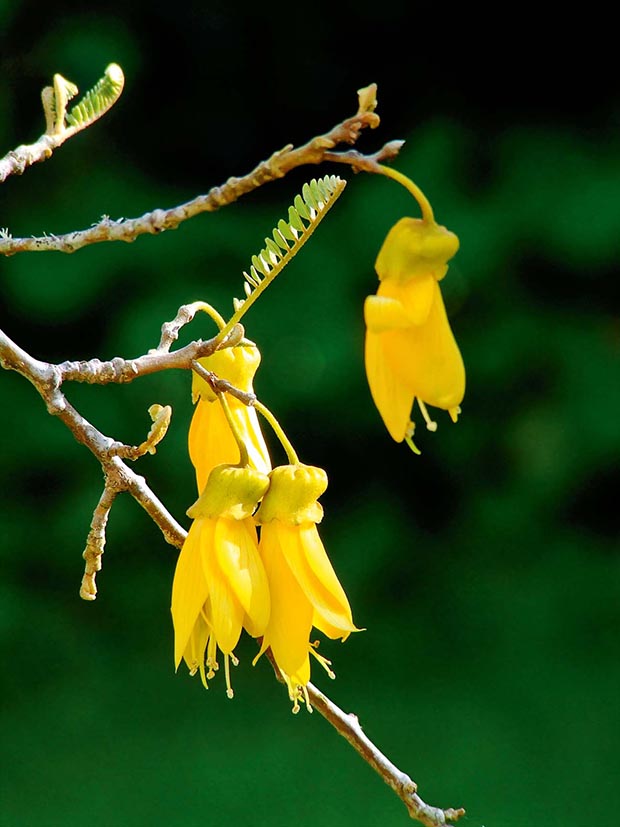
Kowhai (Sophora tetraptera, S microphylla).
Whauwhau or five finger (Pseudopanax arboreus)
Fragrant flowers from July until the end of September, a reliable source of nectar.
Tree Lucerne/tagasaste (Chamaecytisus palmensis)
Creamy white flowers are a good supply of dull, creamy yellow pollen from June to October depending on region. Very fast growing hedging tree to 7m. Subject to stem borer which shortens its life but a useful nurse crop for natives as it is gradually shaded out as natives develop. Honey is whitish and has a mild flavour.
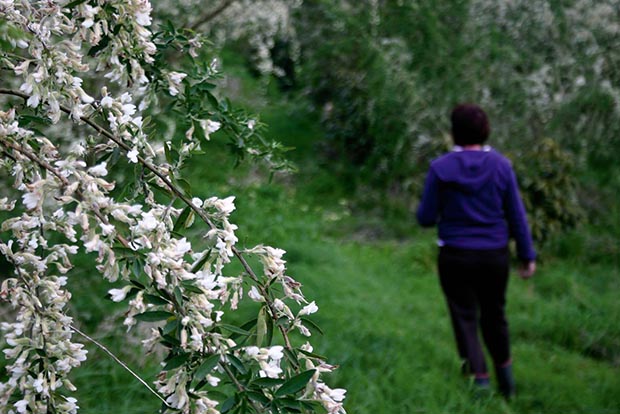
Tree Lucerne (Chamaecytisus palmensis).
SPRING-EARLY SUMMER (OCTOBER-NOVEMBER)
Cabbage tree (Cordyline australis)
Produces large heads of creamy white, sweetly-scented flowers with high nectar levels, especially every third year. The honey is medium-amber in colour and of medium flavour. Cabbage trees provide dramatic landscape effects with their upright form. They are also remarkably resilient, growing in wind, drought or bog.
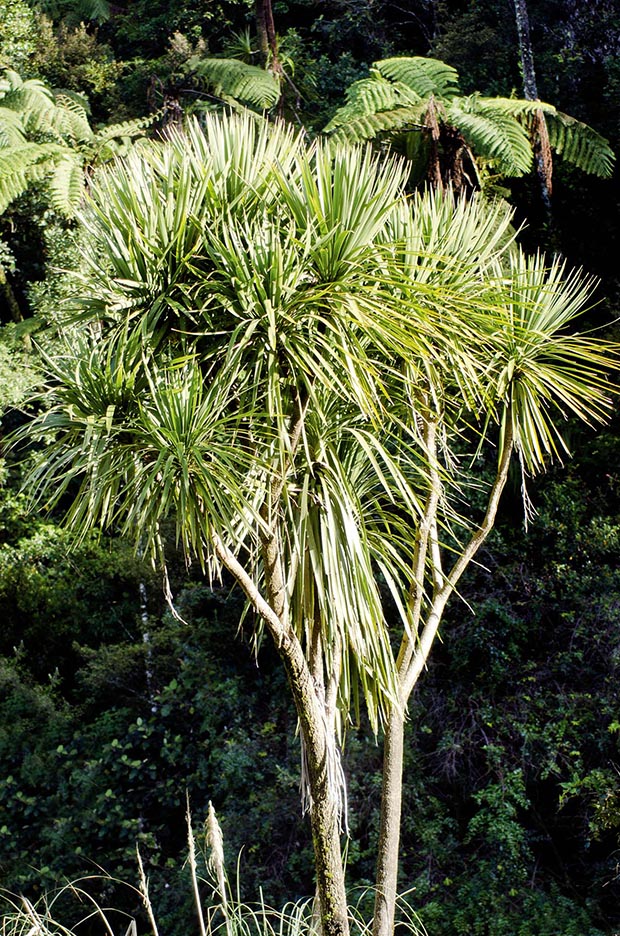
Cabbage Tree (Cordyline australis).
Kohuhu (Pittosporum tenuifolium)
Flowers from October to January, starting bright purple and changing to almost black. Heavily scented at night. Bees forage mainly for the nectar, which can be seen as small drops at the base of the corolla (fused petal base). One of the most useful screening and shelter trees, available in a large number of cultivars from nurseries.
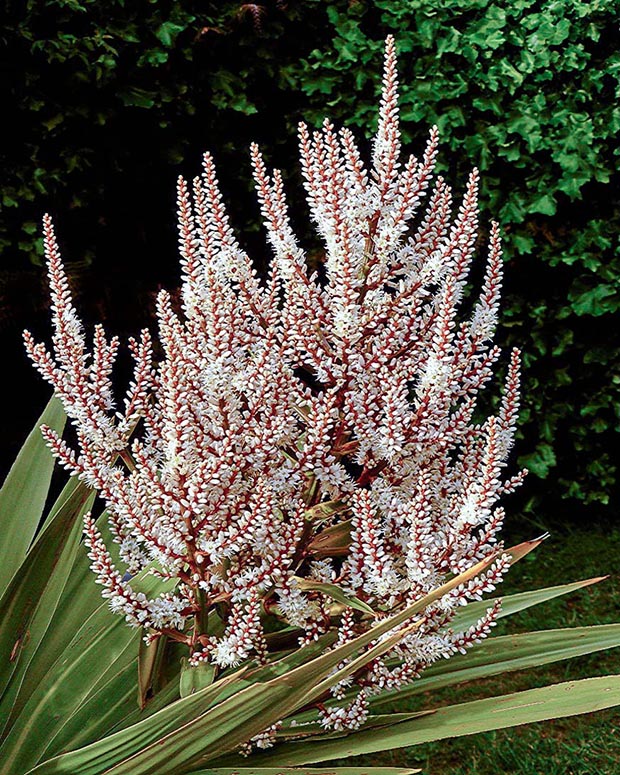
Cabbage Tree flowers (Cordyline australis) Photo: Sid Mosdell, Wikimedia Commons.
Komiko (Hebe stricta and other species)
Hardy versatile native, also a pioneer in natural colonisation. Worked by bees for both pollen and nectar. The pollen is white to dull yellow and honey is light amber with a delicate flavour. Over 100 wild species and many garden cultivars to choose from.
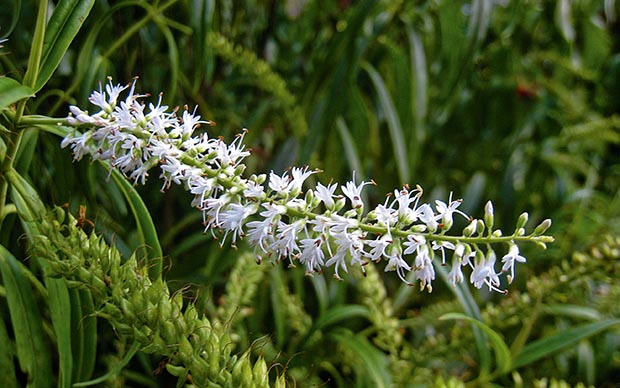
Komiko (Hebe stricta) Photo: Avenue Wikimedia Commons.
SUMMER-EARLY AUTUMN (DECEMBER-MARCH)
Manuka (Leptospernum scoparium)
Secretes nectar under any conditions except very cold winds, also a fair source of a muddy white-coloured pollen. Very useful tree for colonising on infertile soils, especially to provide a nurse crop for natives. Not fussy as to soil, climate or exposure but does get manuka blight, a black sooty-like residue on stems and branches.
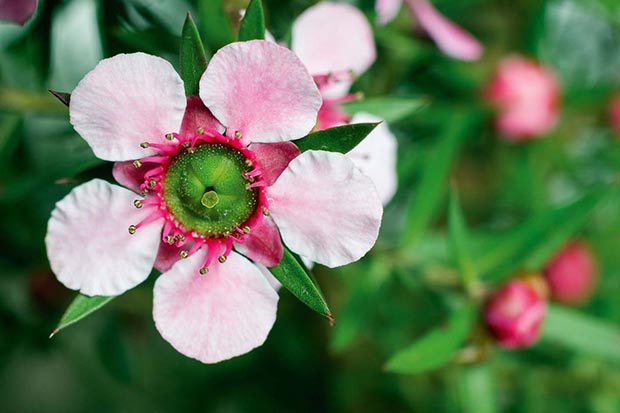
Manuka flower (Leptospermum scoparium).
Numerous cultivars available for garden landscaping. Amber and strongly flavoured honey has significant anti-bacterial properties.
Flax (Phormium tenax)
High value for bees. Dull, reddish flowers from October to January produce a great quantity of pale, clear nectar. Also a good source of a deep salmon-coloured pollen, worked in all seasons. Honey is medium to dark amber but of poor flavour.
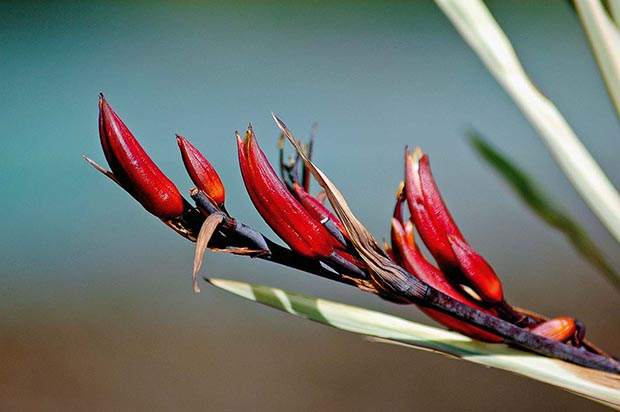
Flax (Phormium tenax).
Silver dollar gum (Eucalyptus cinerea)
Distinguished by its silver-blue circular leaves and gnarled growth habit. The creamy yellow flowers are a good pollen source for bees in autumn. Grows to 15m but can be pruned. Dark medium flavoured honey.
Red flowering gum (Corymbia ficifolia syn. Eucalyptus ficifolia)
Spectacular flower clusters of scarlet to orange from December through February provide a flow of honey after the main flow. Needs shelter from frost when young, older trees are more hardy. Up to 10m but can be trained as a multi-stemmed shrub.
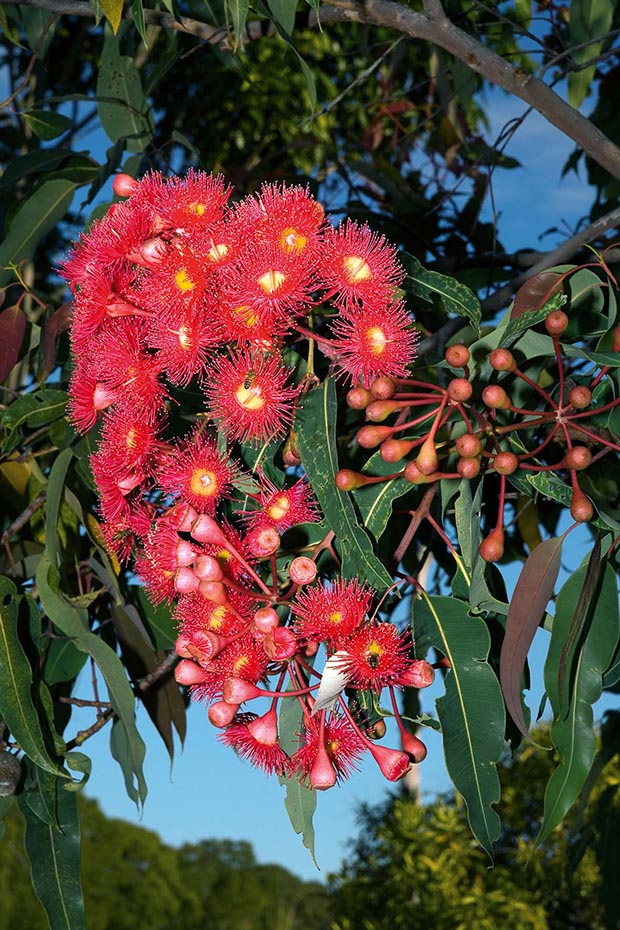
Red flowering gum (Corymbia ficifolia syn. Eucalyptus ficifolia)
AUTUMN-EARLY WINTER (APRIL-MAY)
Houhere or lacebark (Hoheria populnea)
Masses of white, starry flowers cover the tree from March, with most nectar in May. Also a good source of pollen. Quick growing tree, useful for rapid shelter and screening and similar to silver birch in appearance. Honey is medium amber with a strong but not unpleasant flavour. Up to 7m.
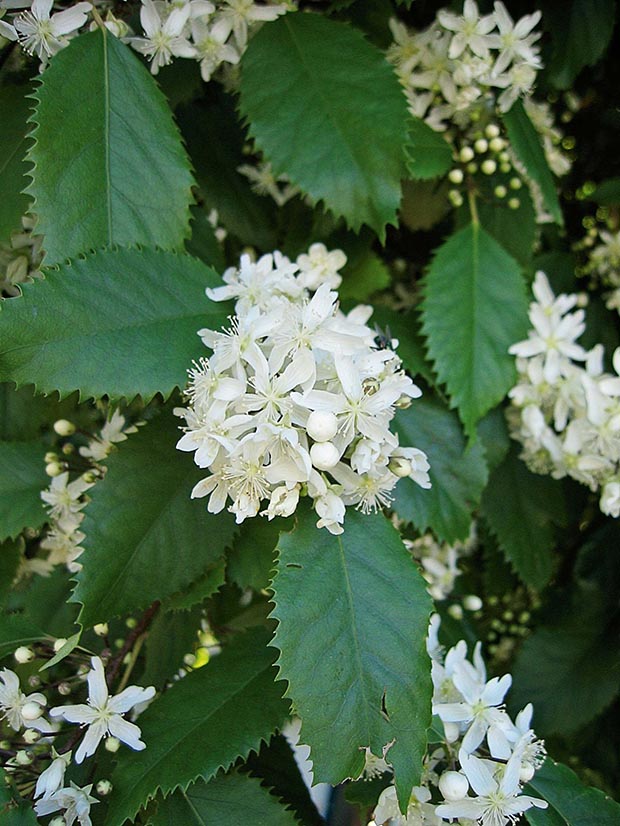
Houhere (Hoheria populnea) Photo: Avenue, Wikimedia Commons.
Winter-flowering pink gum (Eucalyptus leucoxylon Rosea)
Clusters of delicate pink flowers are a good source of both pollen and nectar from March to November. Also loved by native birds (tui, bellbirds etc). Honey is light amber with good flavour. Withstands medium frosts. Grows up to 5m in 5 years. Spreading crown.
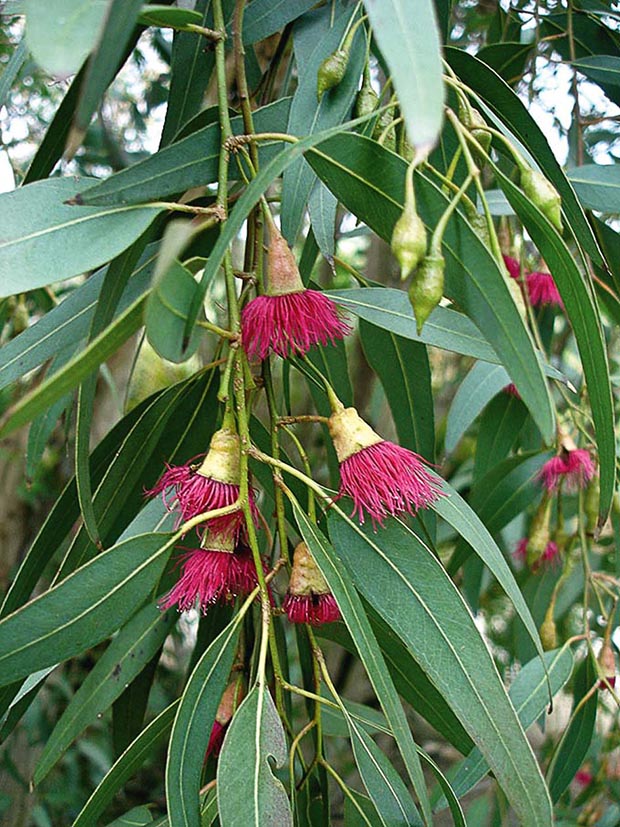
Winter-flowering pink gum (Eucalyptus leucoxylon Rosea) Photo: Jean Tosti, Wikimedia Commons.
Konini /Tree fuchsia (Fuchsia excorticata)
Named after the berries which follow the small greenish-purple flowers from June to January, depending on region. We planted konini for the birds but it is equally valuable as a source of nectar and deep blue pollen for bees. Papery, flaking bark on spreading, twisting branches gives the tree an attractive, shaggy appearance. Slow growing tree, deciduous in cooler areas and frost tender when young. The largest fuchsia in the world growing to 4 -5 m.
Love this story? Subscribe now!
 This article first appeared in NZ Lifestyle Block Magazine.
This article first appeared in NZ Lifestyle Block Magazine.
